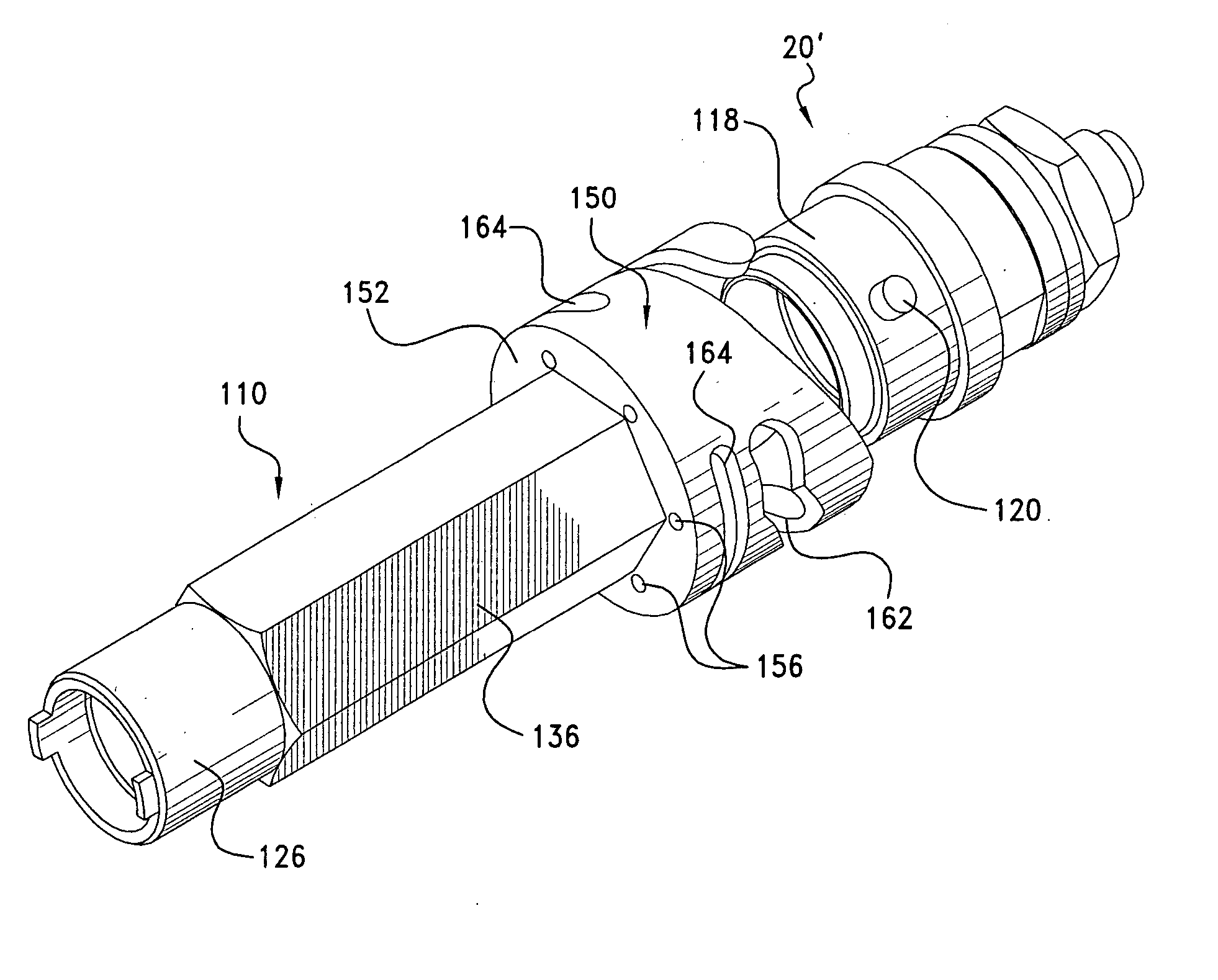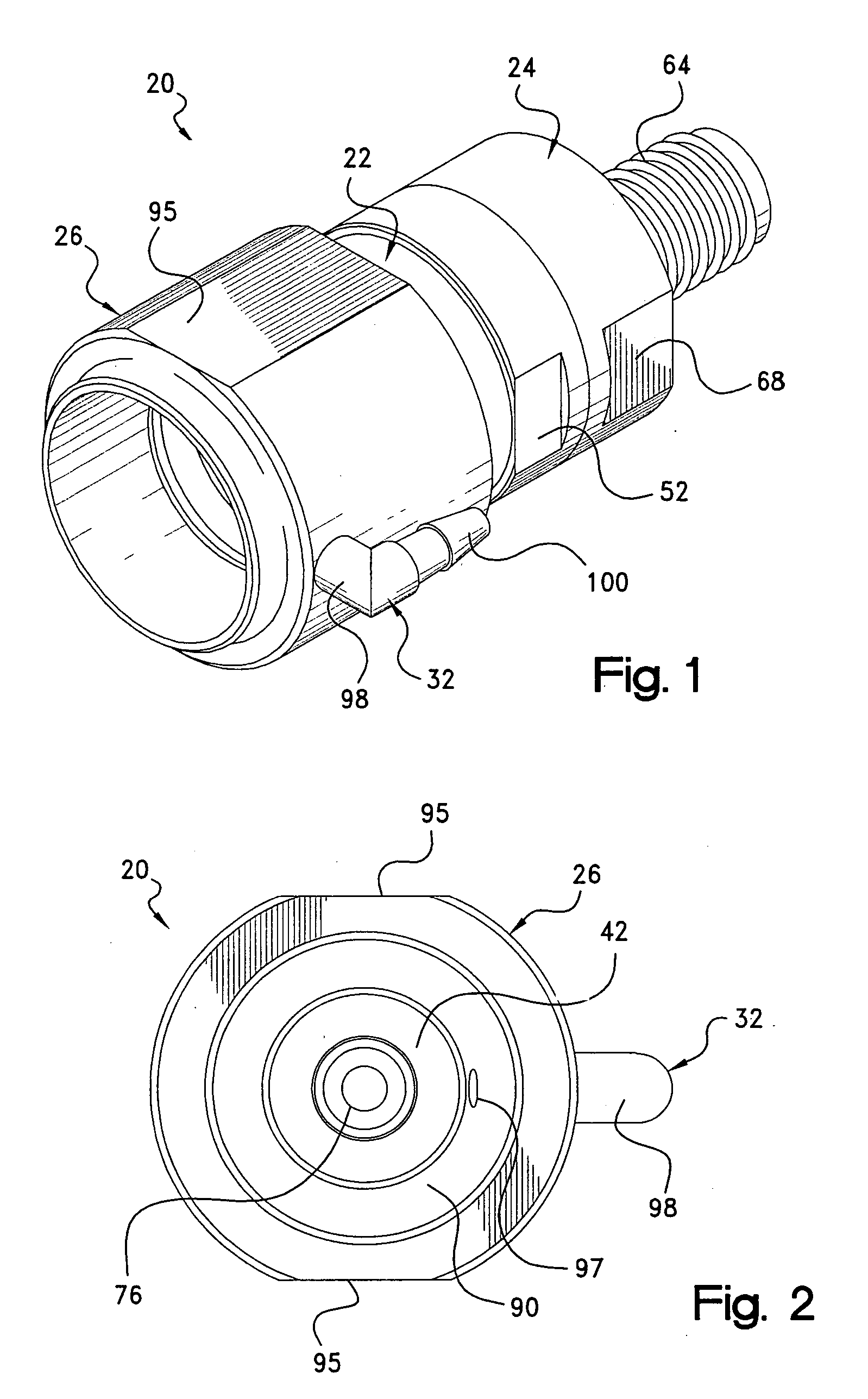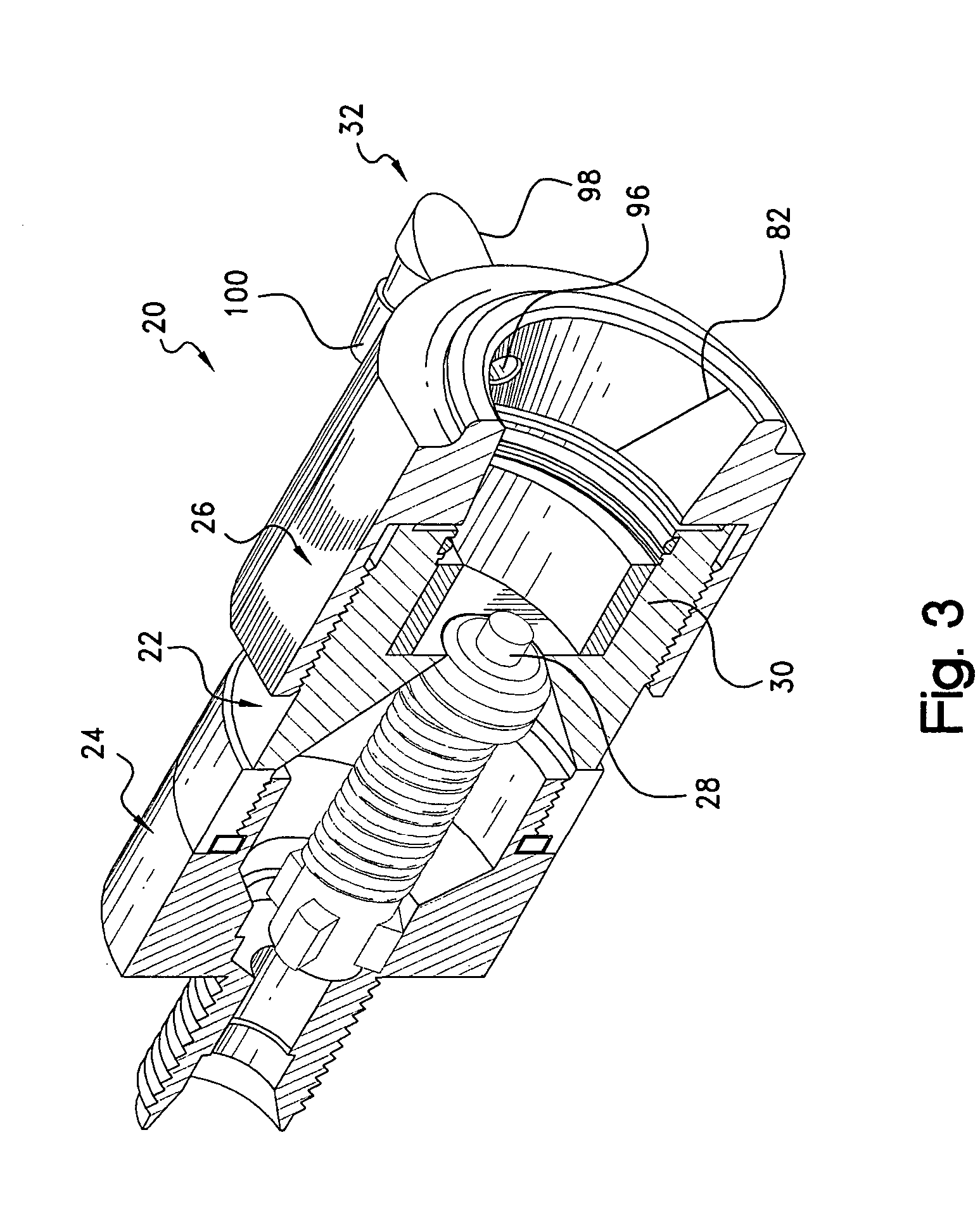Quick disconnect cryogenic coupler
a cryogenic coupler and quick disconnect technology, applied in the direction of couplings, respirators, container discharge methods, etc., can solve the problem that none of these prior art structures include the use of laterally severed tubular bushings, and achieve the effect of preventing icing
- Summary
- Abstract
- Description
- Claims
- Application Information
AI Technical Summary
Benefits of technology
Problems solved by technology
Method used
Image
Examples
first embodiment
[0042] Referring now to the several drawings, illustrated in FIGS. 1-4 is the quick disconnect cryogenic coupler of the present invention, generally indicated at 20, with coupler 20 being basically comprised of the combination of at least five major components, namely: a coupler body 22, an adaptor 24, a coupling sleeve 26, a valve assembly 28, a split bushing 30 in coupler body 22; and an optional vent fitting 32 in coupling sleeve 26. Coupler 20 is adapted to be releasably connected with any desired, known, male nipple (not shown in this embodiment) in order to transfer the cryogenic fluid. It should be understood that with coupler 20, no separate device is utilized to for locking same to the male nipple, rather, coupler 20 is physically held onto the male nipple with an external force being applied to the unit (FIG. 9) in which coupler 20 is installed.
[0043] Specifically, coupler body 22, which is generally cylindrical in shape, has an exterior threaded portion 34 and a cylindric...
second embodiment
[0050] Continuing now with FIGS. 5-8, illustrated therein is the quick disconnect cryogenic coupler of the present invention, generally indicated at 20′. FIGS. 5 and 6 illustrate coupler 20′ and a nipple assembly 110 in the uncoupled position, whereas FIGS. 7 and 8 illustrate same in the coupled position. Coupler 20′ is similar to coupler 20, with like parts being denominated with the same numeral and the addition of a prime (′) superscript as a suffix.
[0051] Specifically, coupler body 22′ together with cut bushing 30′ and seal member 86′ is substantially similar to coupler body 22, bushing 30 and seal member 86. Adaptor 24′ differs from adaptor 24 only by the addition, to intermediate portion 66′, of an exterior threaded portion 114 and a complementary nut member 116. Coupler sleeve 26′ differs from coupler sleeve 26 mainly in that coupler 26′ has a generally tubular outer peripheral surface 122 that includes a recessed diameter frontal portion 118 that is provided with at least on...
PUM
 Login to View More
Login to View More Abstract
Description
Claims
Application Information
 Login to View More
Login to View More - R&D
- Intellectual Property
- Life Sciences
- Materials
- Tech Scout
- Unparalleled Data Quality
- Higher Quality Content
- 60% Fewer Hallucinations
Browse by: Latest US Patents, China's latest patents, Technical Efficacy Thesaurus, Application Domain, Technology Topic, Popular Technical Reports.
© 2025 PatSnap. All rights reserved.Legal|Privacy policy|Modern Slavery Act Transparency Statement|Sitemap|About US| Contact US: help@patsnap.com



